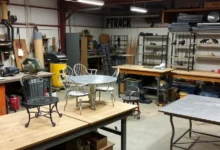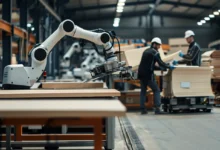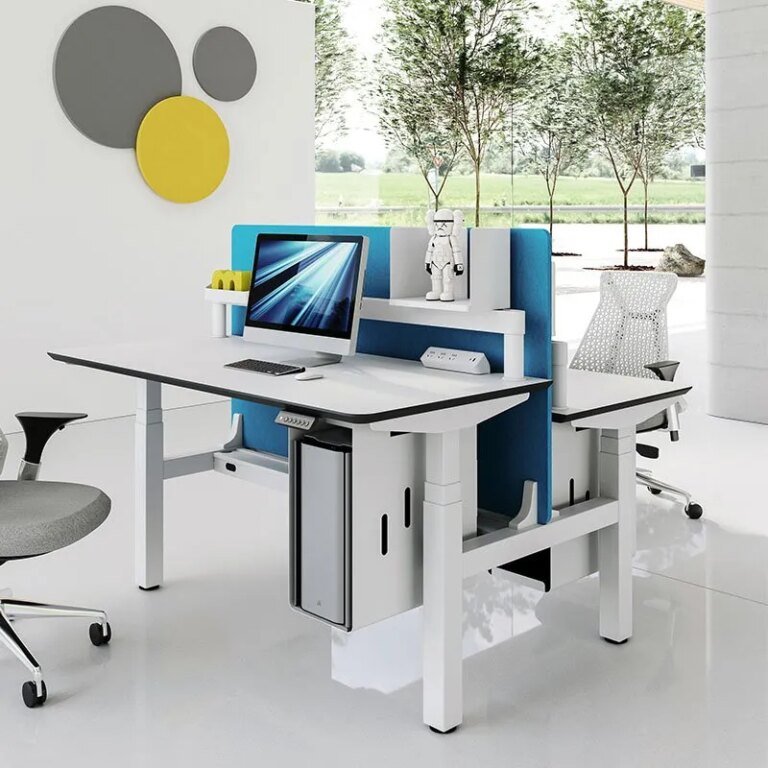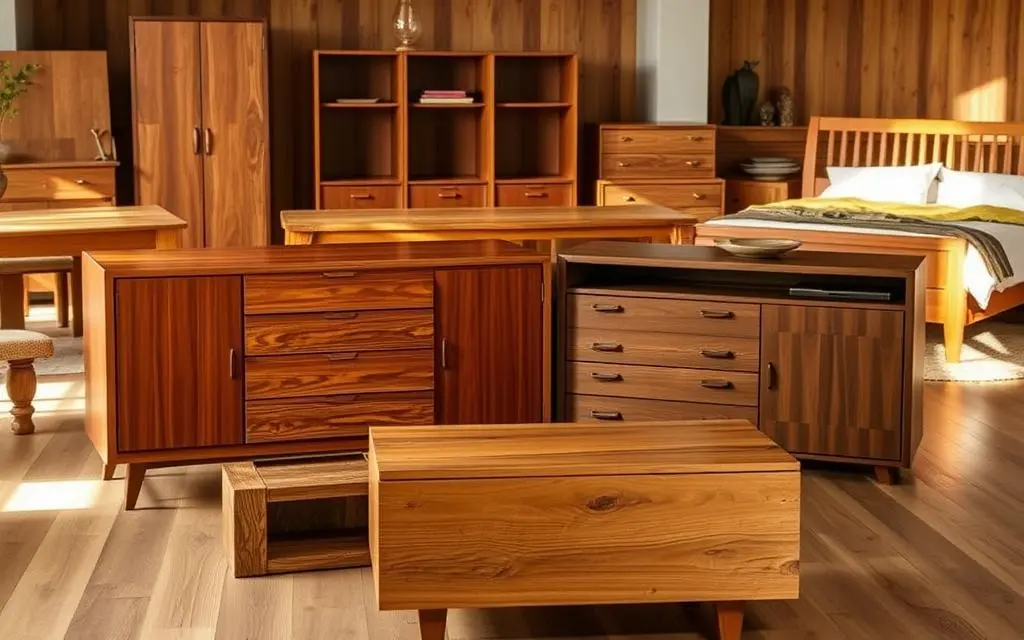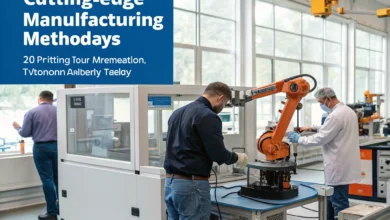Top KPIs for Furniture Production Optimization: Boost Efficiency, Quality, and Profitability with Smart Metrics
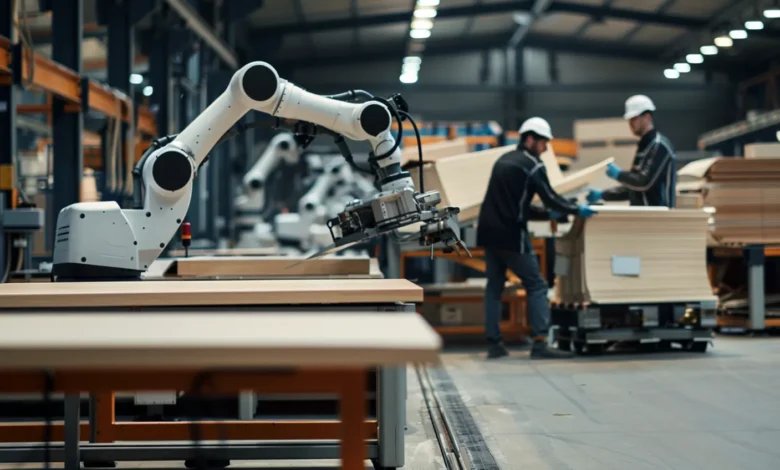
Adjusting production processes to constantly changing market requirements and customer expectations requires that companies not only invest in modern technologies, but also in the skills of continuous analysis and work optimization. In this context, important effectiveness indicators (KPIs, important performance indicators) are an invaluable aid with which furniture manufacturers can systematically measure, evaluate, and improve their production processes.
KPIs are not only used to follow efficiency, but also as a basis for strategic decisions. This allows you to identify areas that require improvement and celebrate those planned results. Thanks to precisely selected indicators, companies can respond quickly to any ineffectiveness, which translates on a long-term perspective into a better use of resources, greater customer satisfaction, and ultimately, to increase profitability.
Operational Performance -Indicators

In the context of furniture production, operational performance is an important aspect that determines the competitiveness of the company in the market. To maintain and improve operational efficiency, it is important to measure and analyze the right performance indicators. Below, we will discuss two fundamental KPIs, which every manufacturer of furniture must regularly check: production cycle time and downtime.
Production Cyclus Time
The time of the production cycle refers to the total time needed to make one product unit, from the start to the end of the production process. It is an indicator with which you can understand how long each production phase lasts and where there can be bottlenecks. The shortening of the cycling time often leads to an increase in production capacity without extra investments in resources.
To optimize the time of the production cycleCompanies can implement the lean manufacturing methodology, which focuses on the elimination of waste in production processes. In addition, regular machine facilities and training for employees can help maintain equipment in good technical condition and increase the competence of the service, which translates directly into faster and more effective production cycles.
Downtime
Production downtime includes periods in which the production line is stopped for various reasons, such as machine errors, material shortages, or errors in production planning. These are moments that not only reduce the performance, but also increase operating costs, because production is delayed and the resources are unused.
Downtime reduction can be achieved through regular technical inspections and suitable maintenance of equipment. With the introduction of real-time monitoring systems in real time you can quickly respond to possible malfunctions and minimize their impact on production. The implementation of the TPM strategy (total productive maintenance) is also an effective method to reduce downtime because it involves all employees in maintaining and improving operational efficiency.
Quality as an efficiency indicator

The quality of products is a key factor that influences customers’ perception of the brand and its competitiveness in the market. Effective quality management in the production process of furniture is just as important as cost control and operational performance. In this section, we will focus on two fundamental indicators for quality effectiveness: the indicator of production errors and the degree of use of raw materials.
Production errors indicator
The Production Out indicator measures the number of defects that occur during production compared to the total number of units produced. The low error indicator is a sign of high-quality processes and effective use of resources, which translates into greater customer satisfaction and lower costs of reconstruction or service.
To reduce the number of production errors is important to implement quality control systems in every phase of the production process. Training for employees, operational standards, and regular quality audits can significantly contribute to improving quality. The use of automation and robotization technologies can also reduce the risk of human errors.
The degree of use of raw materials
The degree of use of raw materials refers to the efficiency with which the materials are used in the production process, thereby minimizing waste and increasing productivity. High efficiency in this area can considerably reduce material costs and influence the sustainable development of the company.
Optimization strategies for the use of raw materials include Accurate production planning, the use of Lean production techniques for minimizing waste, and investments in advanced cutting and processing technologies. In addition, waste recycling and reuse in production can not only lower costs, but also contribute to improving the image of the company as ecologically responsible.
Financial KPIs and their impact on production

Financial management in the furniture production industry is crucial to guarantee its stability and development. Financial efficiency indicators, ie, financial KPIs, are a deep insight into the economic side of the activity, which is needed to make informed strategic decisions. In this section,n we will concentrate on two basic indicators: the production costs of production and the profitability of production lines.
Unit costs of production
The production costs of production are the sum of all direct and indirect costs with regard to the production of one product unit. This is an important indicator for furniture manufacturers with which you can assess production efficiency and identify potential savings.
Lowering the device costs is possible by the Schainging of operations, optimization of material consumption, process automation, and waste reduction. The introduction of modern production technologies, such as CNC machines or software support management systems, can considerably reduce direct costs and improve the total production efficiency.
Profitability of production lines
The profitability of production lines refers to the profitability of individual production segments. The profitability analysis helps to identify which production lines generate the most profit and which possible restructuring or optimization is required.
The strategy to increase profitability is part of the Analysis of workflows and elimination of inefficient processes, which can be achieved by Lean Management. Investments in employee training and regular technical inspections of equipment also contribute to increasing work efficiency and reducing operating costs. In addition, the introduction of a varied product range and adjusting to the needs of the market can increase demand and therefore the profitability of individual lines.
Influence of KPIs on planning and strategic decisions

Good management and analysis of important efficiency indicators (KPIs) play an important role in the strategic planning process and in making business decisions in the furniture industry. With effective use of KPIs, companies can predict market trends, adapt to changing circumstances, and increase customer satisfaction. In this section, we will see how KPIs influence these aspects of the company’s activities.
Analysis of trends in production
Trend analysis is a process of studying changes in production and market data over time, which helps to predict future needs and preferences of customers. KPIs such as sales growth, changes in the demand for specific products, or the efficiency of production lines are crucial for understanding and predicting these trends.
Regular monitoring of selected KPIs makes it possible to State early changes to customer preferences and amend the product range. Thanks to this, companies can respond dynamically to market challenges, eg, by introducing product innovations or adjusting marketing strategies.
KPIs and customer satisfaction
Customer satisfaction is directly related to the quality of products and services. KPIs, such as order processing, the number of complaints, or the results of research into customer satisfaction, are important for the assessment of how the company meets the expectations of its recipients.
Management based on KPIs can identify areas that require improvement in the field of customer service and product quality. The implementation of corrective measures, such as shortening order processing, improving product quality control processes, or introducing loyalty programs, can significantly influence the level of customer satisfaction.
Technology and automation a KPIs

The production of contemporary furniture is increasingly based on advanced technologies and automation, which not only increases operational efficiency but also influences the quality of products and customer satisfaction. In this sectio,n we will discuss how technology and automation can support the implementation of important efficiency indicators (KPIs) in furniture production.
Introduction of modern technologies
The acceptance of modern technologies, such as artificial intelligence, Internet of Things (IoT), or advanced CAD/CAM systems, can considerably improve the precision and efficiency of production processes. These technologies make for faster design, better coordination in the supply chain, and optimization of stock management.
The use of artificial intelligence for the analysis of production data can help predict downtime and optimize production plans. IoT can check the condition of the machines in real time, minimize downtime, and improve maintenance processes. Advanced CAD/CAM design systems, in turn, make a more effective use of materials possible and shorten the time needed to design.
Automation of production processes
Automation of production processes using robots and automated assembly lines can considerably increase the production speed and repetition thereof, while the margin of human errors is reduced. Automatisering is crucial in shortening production cycle time and increasing the overall quality of products.
Implementation of robots in areas such as cutting, assembly, or packaging can improve these processes that ensure greater consistency and production speed. Automated monitoring systems can also analyze real-time production efficiency, allowing you to respond quickly to irregularities.
Summary

The most important effectiveness indicators (KPIs) are necessary for every company that is active in the furniture production industry, which means that not only process monitoring and optimization is possible, but also informing strategic decisions. By concentrating on indicators such as production cycling time, downtime, production quality, unit costs, and profitability of production lines, manufacturers can considerably improve their operational and financial efficiency.
For companies that want to maintain a competitive market position, constant improvement based on KPIS analysis is not only a recommendation but also a necessity. Support with solid data and constant striving for optimization of every aspect of production activities will not only guarantee stability, but also permanent development in the furniture industry. Companies that understand these indicators and use it effectively to manage their activities will be best prepared to achieve success in an increasingly competitive environment.
Here’s a tailored FAQ section for your article on KPIs in Furniture Production Optimization — designed to enhance SEO and reader engagement:
❓ Frequently Asked Questions (FAQ)
1. What are KPIs in furniture production?
KPIs (Key Performance Indicators) are measurable values that help furniture manufacturers track and improve production efficiency, quality, and profitability.
2. Why are KPIs important for furniture manufacturers?
KPIs provide data-driven insights that guide strategic decisions, highlight inefficiencies, and support continuous improvement across production lines.
3. Which KPIs are most critical in furniture production?
- Production Cycle Time
- Downtime
- Error Rate
- Raw Material Utilization
- Unit Production Cost
- Profitability of Production Lines
4. How can KPIs improve production efficiency?
By identifying bottlenecks, reducing waste, and optimizing workflows, KPIs help manufacturers streamline operations and boost output without increasing costs.
5. What tools help monitor KPIs in furniture manufacturing?
Modern solutions include ERP systems, IoT sensors, CAD/CAM software, and real-time dashboards for tracking performance metrics.
6. Can small furniture businesses benefit from KPIs?
Absolutely. Even small workshops can use basic KPIs to manage resources, improve quality, and make informed decisions for growth.
7. How do KPIs relate to customer satisfaction?
KPIs like order fulfillment rate, product quality, and complaint resolution time directly impact customer experience and brand reputation.
Sources Links
- FinModelsLab – 7 Furniture Metrics for Improved Efficiency
Covers key KPIs like production cycle time, inventory turnover, and cost estimation strategies.
Read the article 1 - Interio Works – What KPIs Are Most Important for Optimizing Production?
Offers a comprehensive breakdown of operational, quality, and financial KPIs tailored to furniture manufacturing.
Explore the insights 2 - BPlan.ai – Top 7 Furniture Manufacturing KPIs for Business Success
Focuses on actionable metrics for small businesses and artisans in the furniture industry.
Check the guide 3


